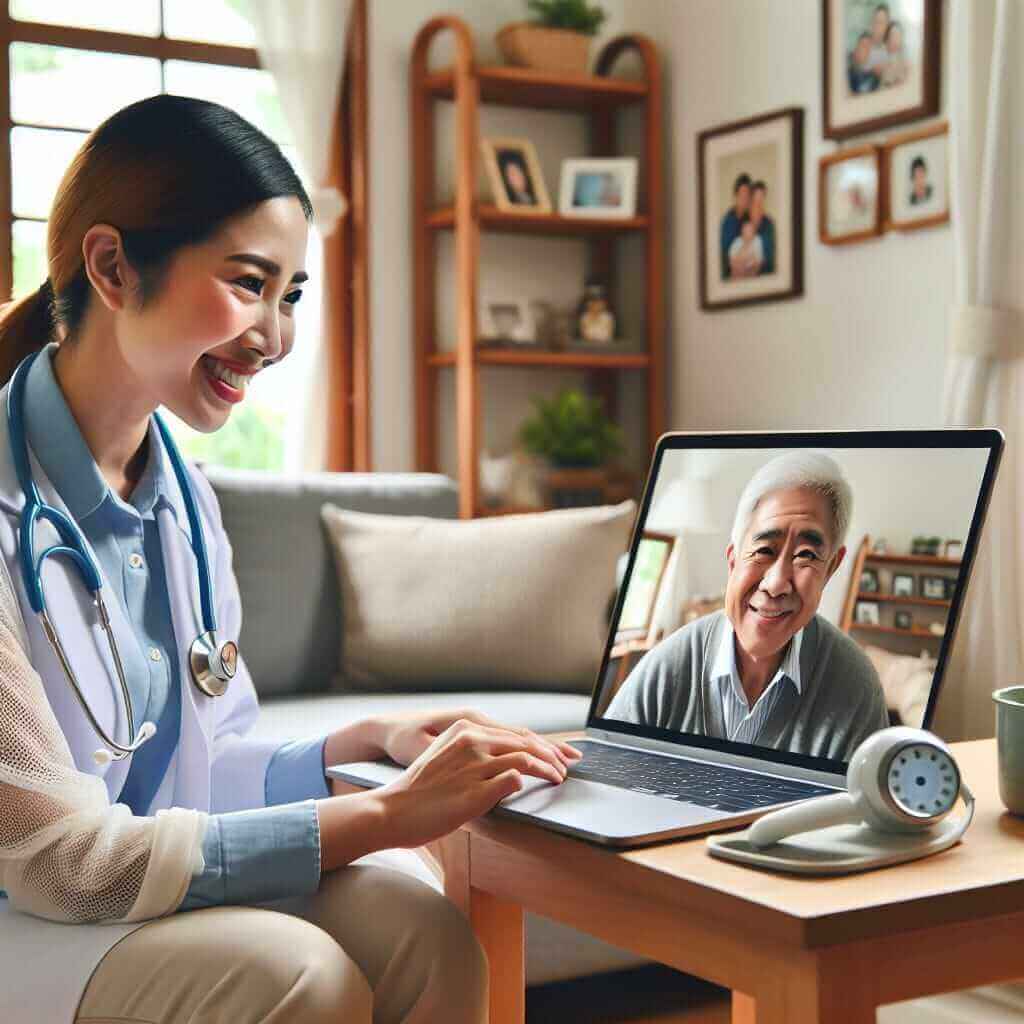The theme of “The role of technology in modern healthcare” frequently appears in IELTS Writing Task 2. It is a fresh and engaging topic that allows candidates to explore various dimensions of technology’s impact on healthcare systems worldwide. This topic not only evaluates a candidate’s linguistic abilities but also their understanding of contemporary issues.
Sample Essay Questions:
- “Some people believe that technology in healthcare has brought more harm than benefits. To what extent do you agree or disagree?”
- “Discuss the advantages and disadvantages of technology in the modern healthcare system.”
- “How has technology changed the face of healthcare in the 21st century? Give reasons for your answer and include any relevant examples from your own knowledge or experience.”
Main Content
Chosen Question for Writing Sample:
“Discuss the advantages and disadvantages of technology in the modern healthcare system.”
Essay Structure:
- Introduction: Introduce the topic and outline the key points.
- Body Paragraph 1: Discuss the advantages of technology in healthcare.
- Body Paragraph 2: Examine the disadvantages and potential pitfalls.
- Conclusion: Summarize the main points and reiterate your stance.
Sample Essay
Introduction:
In the 21st century, technology has dramatically transformed the healthcare sector. The integration of advanced technologies such as artificial intelligence, telemedicine, and electronic health records has revolutionized patient care and healthcare management. However, this transformation is not without its drawbacks. This essay will discuss both the advantages and disadvantages of technology in modern healthcare.
Body Paragraph 1:
One of the significant advantages of technology in healthcare is the improvement in patient care and outcomes. Advanced diagnostic tools, such as MRI and CT scanners, enable early and accurate disease detection, which is crucial for effective treatment. Telemedicine allows patients in remote areas to access medical consultations and services without the need for travel, thus bridging the gap between healthcare providers and patients. Additionally, electronic health records (EHRs) streamline the documentation process, ensuring that patient information is up-to-date, easily accessible, and securely stored. This enhances the efficiency of healthcare delivery and reduces the likelihood of medical errors.

Body Paragraph 2:
On the other hand, the reliance on technology in healthcare also presents several challenges. One primary concern is the high cost associated with the implementation and maintenance of advanced medical technologies, which can be prohibitive for smaller healthcare facilities or those in developing countries. Furthermore, the dependence on electronic systems raises cybersecurity issues; patient data can be vulnerable to breaches, resulting in privacy concerns and potential misuse of sensitive information. Additionally, the increasing automation in healthcare might lead to reduced human interaction, which is essential for patient empathy and trust, potentially impacting the patient-provider relationship negatively.
Conclusion:
In conclusion, while technology undeniably enhances the quality and accessibility of healthcare, it also brings challenges that need to be addressed. Balancing the benefits of technological advancements with potential drawbacks is crucial for creating a sustainable and efficient healthcare system. Policymakers and healthcare providers must work collaboratively to ensure that technology serves to complement, rather than replace, the human elements of healthcare.
Word count: 304
Key Considerations When Writing:
-
Coherence and Cohesion:
- Ensure logical flow and clear connections between ideas.
- Use linking words/phrases to guide the reader through the essay (e.g., firstly, additionally, on the other hand).
-
Lexical Resource:
- Use a range of vocabulary pertinent to healthcare and technology.
- Avoid repetition by employing synonyms and paraphrasing.
-
Grammatical Range and Accuracy:
- Utilize various sentence structures (compound, complex).
- Maintain grammatical accuracy by carefully proofreading for errors.
Essential Vocabulary:
- Revolutionize (verb) [ˌrɛvəˈluːʃənaɪz]: to bring about a complete and dramatic change.
- Telemedicine (noun) [ˌtɛlɪˈmɛdɪsɪn]: the remote diagnosis and treatment of patients through telecommunications technology.
- Diagnostic (adjective) [ˌdaɪəɡˈnɒstɪk]: relating to the identification of the nature of an illness or other problem.
- Cybersecurity (noun) [ˌsaɪbərsɪˈkjʊərɪti]: the protection of internet-connected systems, including hardware, software, and data, from cyberattacks.
- Automation (noun) [ˌɔːtəˈmeɪʃən]: the use of largely automatic equipment in a system of operation.
Conclusion
In exploring the role of technology in modern healthcare, it is apparent that technology can significantly enhance healthcare delivery though it comes with its set of challenges. Practicing essays on this theme will enable candidates to articulate their thoughts coherently and critically discuss contemporary issues.
Additional Practice Questions:
- “To what extent has technology made healthcare more accessible?”
- “Evaluate the impact of emerging technologies such as AI and robotics on healthcare.”
This structure and approach towards writing on the topic will substantially aid candidates in their preparation for the IELTS Writing Task 2.